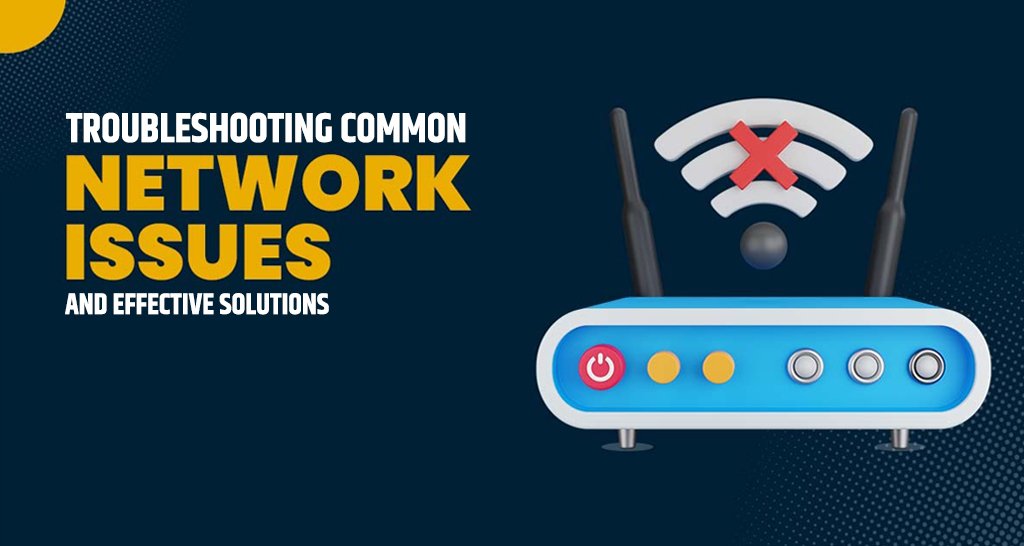In a modern business environment, a reliable and secure network is crucial for operational efficiency. However, various issues can disrupt network performance, affecting productivity and security. Understanding common network problems and their solutions can help maintain a robust network infrastructure. Here are some typical network issues companies face and how to resolve them.
- Slow Network Performance
Problem: Slow network performance is better known as latency and can result from various factors, including bandwidth congestion, outdated hardware, and network misconfigurations. This issue can lead to delays in communication, slow file transfers, and lag in cloud services.
Solution:
- Upgrade Hardware: Ensure that routers, switches, and cables are up-to-date and capable of handling current network demands.
- Bandwidth Management: Implement Quality of Service (QoS) settings to prioritize critical applications and manage bandwidth allocation effectively.
- Network Optimization: Regularly review and optimize network configurations to prevent bottlenecks.
- Network Downtime
Problem: Network downtime can be caused by hardware failures, software bugs, or external attacks, leading to significant disruptions in business operations and potential revenue loss.
Solution:
- Redundant Systems: Implement redundant hardware and failover mechanisms to ensure network continuity in case of a failure.
- Regular Maintenance: Conduct regular hardware and software maintenance to identify and address potential issues before they cause downtime.
- Disaster Recovery Plan: Develop and regularly test a disaster recovery plan to quickly restore network services in the event of a failure.
- Security Breaches
Problem: Security breaches can occur due to weak passwords, unpatched vulnerabilities, and insufficient network monitoring, leading to unauthorized access, data theft, and potential regulatory penalties.
Solution:
- Strong Authentication: Use multi-factor authentication (MFA) and enforce strong password policies to enhance security.
- Patch Management: Regularly update and patch all software and hardware to protect against known vulnerabilities.
- Continuous Monitoring: Implement Security Information and Event Management (SIEM) systems to monitor network activity and detect suspicious behavior in real-time.
- IP Address Conflicts
Problem: IP address conflicts occur when two devices on the same network are assigned the same IP address, leading to connectivity issues for both devices.
Solution:
- DHCP Configuration: Ensure that your DHCP server is correctly configured to assign unique IP addresses automatically.
- Static IP Management: For devices requiring static IP addresses, maintain a documented list to avoid duplication.
- Regular Audits: Conduct regular network audits to identify and resolve IP conflicts promptly.
- Wireless Connectivity Issues
Problem: Wireless connectivity issues can stem from signal interference, inadequate coverage, or outdated wireless equipment, resulting in poor connection quality and frequent disconnections.
Solution:
- Signal Optimization: Use wireless signal boosters and strategically place access points to ensure comprehensive coverage.
- Equipment Upgrade: Upgrade to the latest Wi-Fi standards (e.g., Wi-Fi 6) for improved performance and reliability.
- Interference Management: Identify and eliminate sources of interference, such as other electronic devices operating on the same frequency.
- Poor Network Design
Problem: A poorly designed network can lead to inefficient data flow, security vulnerabilities, and difficulty in scaling as the business grows.
Solution:
- Network Assessment: Conduct a thorough assessment of the current network design and identify areas for improvement.
- Scalable Design: Implement a scalable network architecture that can grow with the business, incorporating elements such as modular switches and cloud-based services.
- Professional Consultation: Engage with network design professionals to create an optimized, future-proof network infrastructure.
Conclusion
Maintaining a reliable and secure company network requires proactive management and continuous improvement. Businesses can ensure their network infrastructure supports operational efficiency and growth by addressing common issues such as slow performance, downtime, security breaches, IP conflicts, wireless connectivity problems, and poor network design. Implementing the appropriate solutions and regularly updating network practices will help maintain a robust and secure network environment.
Thank You.












